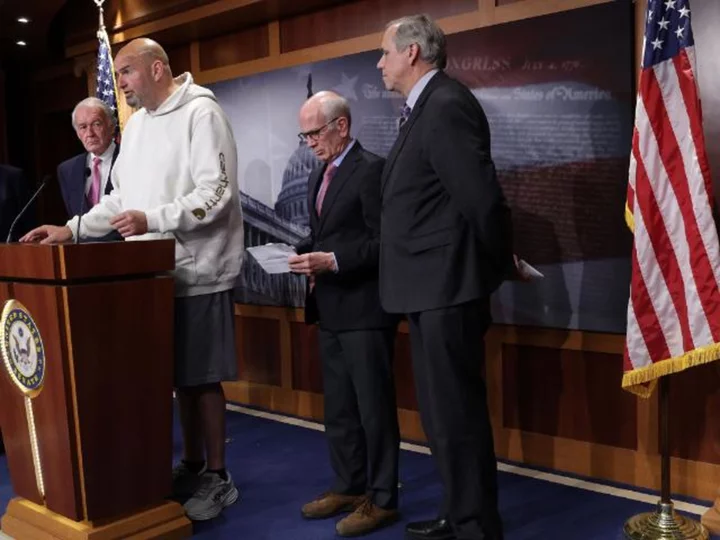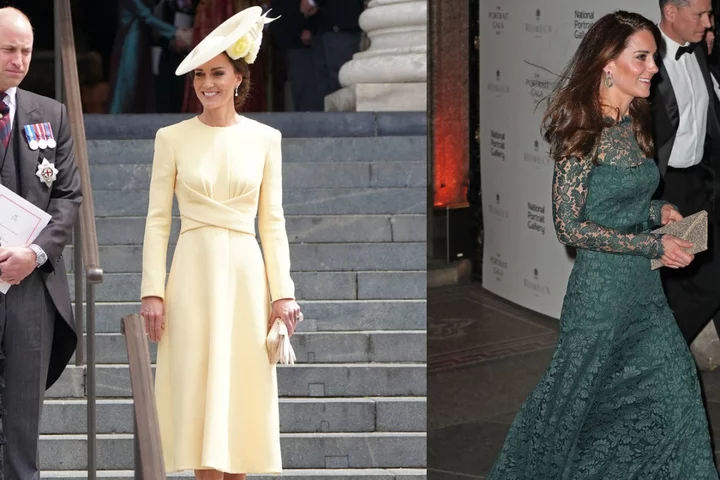The historical arc of the United States has brought us from the beginning, when most senators wore breeches -- knee-length pants with silk stockings -- to a place where about half the senators are complaining that one senator wants to wear shorts -- knee-length shorts, often without socks.
Stacked up against the long and growing to-do list on which the House and Senate are making very little progress, this dress code flap seems like a distraction.
House Republicans are fighting among themselves and unable to pass a spending bill that would be an opening bid to deal with Democrats before government funding lapses at the end of the month.
Senators still haven't figured out how to get Sen. Tommy Tuberville, the Alabama Republican, to end his blockade of all top-level Pentagon nominations.
Sen. John Fetterman, the Pennsylvania Democrat who has a preference for wearing shorts and a hoodie, noted the disconnect between the importance of matters of state and matters of style when he issued a press release offering to wear a suit if Republicans could agree to pass a spending bill.
30 years ago ...
Then-Sen. Barbara Mikulski, the 4-foot-11-inches Democrat from Maryland, caused a stir -- some call it the "pantsuit rebellion" -- in 1993 when she confirmed with the Senate parliamentarian that there was no written dress code and then dared to abandon skirts and dresses to wear pants on the Senate floor.
Mikulski, now retired, told CNN's Dana Bash about it in 2010.
"I'm most comfortable wearing slacks, and well, for a woman to come on the (Senate) floor in trousers was viewed as a seismographic event," Mikulski said.
Aren't there more important things?
Now, the 6-foot-8-inches Fetterman is causing a stir by baring his legs in shorts.
"Aren't there more important things we should be talking about rather than if I dress like a slob?" Fetterman asked on MSNBC.
Most Republicans and at least one Democrat, Sen. Joe Manchin of West Virginia, have complained. Sen. Susan Collins, the Republican from Maine, joked she might wear a bikini "because there's no dress code anymore."
The Senate prides itself as being the world's greatest deliberative body, but it maintains the trappings of the world's stodgiest.
There are spittoons kept on the floor in the Senate chamber, although no current senators are known to shoot tobacco juice into them. There are inkwells on the desks. Laptops are not allowed.
Fetterman, on the other hand, built his career as the outside-the-mainstream, alterna-politician.
He was elected despite suffering a stroke before Election Day and in part because of his persona. But he did not adapt well to life in the Senate back when he wore suits. After checking himself in to Walter Reed National Military Medical Center for depression, Fetterman has emerged, returning to his sartorial roots, and wearing what he wants.
Rather than force the person Pennsylvanians elected to cast Senate votes from just inside the cloakroom rather than from the floor, Senate Majority Leader Chuck Schumer has directed the Senate sergeant-at-arms to stop enforcing the informal dress code.
The reason to oppose shorts
The relaxing of this unofficial rule led Sen. Rick Scott, the Florida Republican, to write a strongly worded letter to Schumer (it was signed by 45 of his compatriots) demanding a return to the informal decorum.
Noting that it is on the Senate floor that they make the gravest of decisions -- sending American service members into harm's way -- the pro-pants senators added, "The world watches us on that floor and we must protect the sanctity of that place at all costs."
Aside: Senators authorized the use of military force against pretty much anyone the US government considers to be a threat back in 2001 after the 9/11 terror attacks, and it is on the basis of that vote that most US military operations have been conducted ever since.
The lack of votes senators have actually taken over the past 20 years on sending US service members into harm's way compared with the number of service members who have actually been sent into harm's way could arguably use some attention on the Senate floor.
The Ted Cruz example
Fetterman is not the first sitting senator known to have voted while wearing shorts. That was Sen. Ted Cruz of Texas, who came straight from a basketball game with some sweaty aides to vote in August 2022.
Despite the photos of a sweaty Cruz outside the Senate chamber, he is among the senators who signed on to Scott's dress code demand.
Surely there have been breeches breaches in the past, perhaps on a weekend with votes, when a senator or two came straight from the golf course?
The Senate historian's office has a memo dedicated to senatorial attire, and it notes that senators moved away from breeches by the 1820s in part because elected officials were trying "to distance themselves from signs of elitism."
The ultimate violation of decorum
During a long period in which pantaloons would be paired with a frock coat, senators such as Charles Sumner of Massachusetts would shake things up with colorful pants.
Sumner, by the way, was the subject of the ultimate Senate impropriety. An abolitionist, he was caned nearly to death -- on the Senate floor -- after insulting a senator from South Carolina in the years leading up to the Civil War.
The rise of the 'lounge suits' senators wear today
Frock coats didn't last forever. They were slowly replaced by what back then was referred to as a lounge suit, but which according to the historian is more like today's business suit.
The memo also includes a story from the late 1970s, during an energy crisis, when then-President Jimmy Carter instructed all federal buildings to set their thermostats to 78 degrees Fahrenheit in order to save energy. A proposal to allow congressmen to skip jackets and ties on the House floor was defeated.
Covering shoulders in Missouri, but not in the US Senate
In Missouri, lawmakers this year targeted women with a stricter dress code that requires the covering of shoulders.
The US Senate has moved in the opposite direction, which must be a relief to Sen. Kyrsten Sinema, the Arizona independent who favors colorful and frequently sleeveless attire -- although Sinema did once preside over the Senate while wearing a denim vest and sneakers.
This is not the first time a dress code has been political
Former President Bill Clinton let staffers dress down in the West Wing and former President George W. Bush required jackets and ties from all staffers.
Aides to more recent presidents have dressed informally when they worked on weekends.
Full disclosure
I'm never going to wear shorts to the office. Not ever.
While I do frequently wear a suit jacket or sport coat, I have a large number of neckties that have not been worn in years. I do enjoy wearing jeans along with a dress shirt.
Reporters at the White House or in Congress uniformly dress for those environments. But photojournalists are rightly more casual.
The best dress code is the two-word version imposed by General Motors CEO Mary Barra: "Dress appropriately." But that also gives people the power to figure it out.









